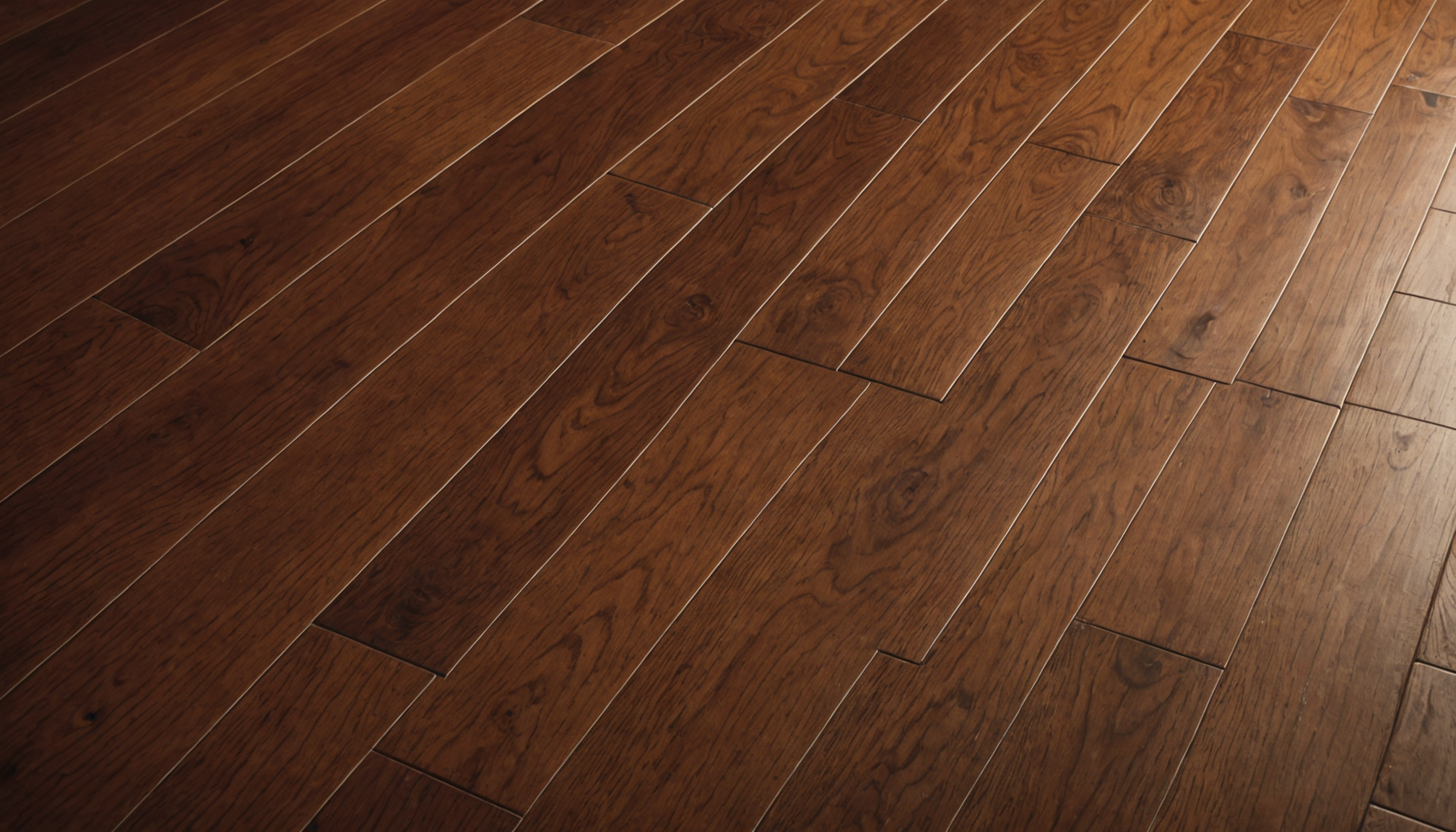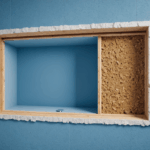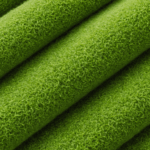When choosing between hardwood and carpet for your flooring, durability is a critical factor that often guides the decision-making process. It’s essential to consider how each option will hold up to the challenges of daily life, including foot traffic, potential spills, and the test of time.
Hardwood floors are renowned for their robust nature and longevity. They are crafted from solid or engineered wood, offering a durable surface that can withstand significant wear and tear. The resilience of hardwood makes it an ideal choice for high-traffic areas such as hallways, living rooms, and kitchens. Furthermore, scratches or dents, which are some of the most common issues in flooring, can often be repaired by sanding and refinishing, extending the life of the flooring over decades.
Carpet, on the other hand, presents a different kind of durability. Carpets are generally softer underfoot and can absorb sound, making them a popular choice for bedrooms and living rooms. However, carpets can be susceptible to stains, wear patterns, and fading, particularly in heavily trafficked areas. The longevity of carpet can also vary significantly depending on the fibers used; for example, nylon and wool tend to be more resilient than other synthetic blends.
| Aspect | Hardwood | Carpet |
| Longevity | Can last for decades with proper care | Generally lasts 5-15 years |
| Maintenance | Requires occasional refinishing | May need regular deep cleaning |
| Scratch & Dent Resistance | Can be scratched but typically repairable | Not applicable, more susceptible to wear |
| Stain Resistance | Resistant to most stains with sealant | Prone to staining |
Both hardwood and carpet offer their unique advantages and challenges concerning durability. Hardwood flooring’s sturdy nature and adaptability to repair prolong its lifespan significantly. Meanwhile, while carpet might not boast the same lifespan, its comfort and sound-dampening qualities make it suitable for certain spaces despite needing more frequent replacement. Ultimately, understanding the durability requirements for the specific areas in your home will guide you toward the best choice for your flooring project.
assessing comfort and aesthetics
When it comes to the feel of your flooring, both hardwood and carpet offer unique experiences that cater to different preferences and functional needs. To make an informed decision, it’s important to consider the comfort level, aesthetic appeal, and the kind of atmosphere each type can bring to a room.
1. Comfort:
– Hardwood: Although not as inherently soft as carpet, hardwood can still offer a comfortable experience, especially with the addition of area rugs. Hardwood floors can feel cool underfoot, which might be preferred in warmer climates. Modern enhancements, like radiant heating, can make hardwood a cozy choice even in cooler seasons.
– Carpet: Known for its warmth and softness, carpet provides a cushion underfoot, making it particularly desirable in areas where you are likely to walk barefoot, such as bedrooms or family rooms. It offers a plush feeling that hardwood cannot naturally provide, which can be ideal for families with young children and elderly members who might appreciate the comfort and grip carpet offers.
2. Aesthetic Appeal:
– Hardwood: With its natural grain patterns and variety of wood species, hardwood adds a timeless elegance and sophistication to any room. It comes in a broad range of colors, finishes, and styles, from rustic and traditional to sleek and modern. Hardwood tends to be more versatile in aligning with various design preferences and can easily complement different decor styles as tastes evolve over time.
– Carpet: Available in a wide array of colors, patterns, and textures, carpet can be a visually striking element within a space. This flooring option allows for bold design choices with various styles such as plush, cut-pile, or loop. Carpeting can add a certain warmth and coziness to a room that is unmatched by other materials, making it a great choice for creating a welcoming atmosphere.
3. Atmosphere and Space Use:
– Hardwood: This material can enhance the perception of space, often making rooms appear larger and more open due to its sleek nature. Its reflective surface can add to the lighting of a room, contributing to a bright and airy feel. Hardwood is often chosen for communal areas and spaces aiming for a high-end look.
– Carpet: It often provides a more intimate and comfortable setting, absorbing sound and adding to the overall quietness of a room. The acoustic benefits of carpet make it particularly suitable for spaces where sound insulation is a priority, like bedrooms or home offices.
In evaluating the comfort and aesthetics offered by hardwood and carpet, it’s important to consider the specific needs of your household and the function of each room. While hardwood presents a classic and adaptable style with a cooler, sleeker feel, carpet provides warmth and comfort that appeals to those seeking cozy, soft environments. Balancing these considerations with personal preference and lifestyle can help guide your choice in flooring that not only complements your home’s decor but also enhances your living experience.
maintenance and cleaning considerations
When selecting flooring, understanding the maintenance and cleaning involved is crucial to ensure the longevity and appearance of your floor. Each type of flooring, whether hardwood or carpet, presents distinct challenges and benefits in terms of upkeep and cleanliness.
Hardwood floors are often praised for their relative ease of maintenance. Routine cleaning typically involves sweeping or vacuuming to remove dust and debris, followed by a damp mop with a cleaner specifically designed for wood floors. The sealed surface of hardwood is less likely to trap dirt and allergens, making it a suitable option for households concerned with indoor air quality. One of the significant advantages of hardwood is its ability to be refinished. When scratches, dullness, or minor damage occur, sanding and refinishing can restore the floor to its original condition, often making it look as good as new. This capability to refresh effectively contributes to its long-lasting appeal. However, it’s essential to promptly wipe up any liquid spills to prevent water damage, which can lead to warping or staining if not addressed swiftly.
Carpet, on the other hand, requires a more robust cleaning routine. It typically necessitates regular vacuuming, at least once a week, to remove surface dirt and prevent the buildup of dust and allergens. Additionally, professional deep cleaning or steam cleaning should be conducted every 12 to 18 months to maintain its appearance and hygiene. While the softer fibers of carpet provide a cozy underfoot experience, they also present a risk for stains and retain allergens more readily than solid surfaces like hardwood. Quick attention to spills with suitable stain removal methods can prevent permanent discoloration. Carpets may also occasionally require spot treatment with specialized cleaners for stubborn stains. For pet owners or allergy sufferers, more frequent cleaning might be necessary to manage odors and allergens.
Ultimately, the maintenance and cleaning requirements for each type of flooring differ, playing a pivotal role in determining which might be best suited to your household’s lifestyle and needs. Hardwood is celebrated for its straightforward cleaning process and ability to look refreshed over time with proper care. Meanwhile, although carpet demands more frequent and intensive cleaning, it rewards with comfort and warmth that many homeowners find invaluable. Understanding these aspects can help you weigh the balance of effort needed versus the aesthetic and functional benefits each type offers, helping you make an informed flooring decision that aligns well with your expectations and household demands.
cost analysis: initial investment and long-term value
When considering the financial implications of hardwood versus carpet flooring, it’s essential to look at both the initial costs and the long-term value each option provides. This analysis can help you determine which type of flooring aligns better with your budget and long-term home investment goals.
Starting with initial investment, hardwood flooring typically demands a higher upfront cost compared to carpet. The price range for hardwood varies significantly based on the type of wood, with exotic species usually being more expensive than domestic ones. Additionally, installation costs for hardwood can be relatively high due to the precision and skill required to properly lay the boards. On the other hand, carpet is generally more affordable upfront. The cost can vary depending on the quality of the carpet and padding, but in many cases, it requires a smaller initial outlay compared to hardwood. Installation is also usually less expensive and less time-consuming for carpet.
For many homeowners, long-term value is where hardwood flooring truly shines. Hardwood floors have a reputation for increasing property value due to their durability and classic appeal. They can last for decades with proper maintenance and can often be refinished instead of replaced, offering homeowners a cost-effective way to rejuvenate their space. Additionally, hardwood’s timeless style can appeal to potential buyers, potentially making it a more desirable choice if you plan to sell your home down the line.
Carpet, while initially cheaper, may not offer the same longevity. It tends to wear out faster and may need to be replaced every 5 to 15 years, especially in high-traffic areas. This shorter lifespan can add to the total cost over time, as repeat purchases and installations must be factored into the long-term budget. However, for those who prioritize comfort and affordability over time, the lower upfront costs of carpet can still be appealing.
When assessing cost-efficiency, consider not only the upfront price but also maintenance expenses. Hardwood generally requires less frequent replacement and can save money in the long run, whereas the cyclical need to replace carpet can add up. The key is to weigh these considerations against your immediate financial capacity and your long-term home goals. Whether you opt for the enduring value of hardwood or the lower initial expense of carpet, understanding the financial nuances of each option helps ensure that your flooring choice is well-aligned with your budgetary needs and lifestyle preferences.
environmental impact and sustainability factors
Selecting flooring often involves considering the environmental and sustainability factors associated with each option. Hardwood and carpet each have distinct environmental impacts, both in their production and throughout their lifecycle.
Hardwood flooring is generally considered a more sustainable choice if sourced responsibly. Certified hardwoods, like those backed by the Forest Stewardship Council (FSC), ensure wood is harvested sustainably, minimizing ecological disruption. These certifications help reduce deforestation and promote responsible forest management. Additionally, hardwood’s long lifespan and ability to be refinished rather than replaced make it an environmentally friendly option. However, it’s crucial to be aware of the carbon footprint associated with transporting exotic woods and the potential use of chemicals in certain finishes, which may impact indoor air quality.
Carpet, in contrast, often involves synthetic fibers such as nylon or polyester, derived from non-renewable petroleum resources. The production of synthetic carpets can contribute to environmental pollution and a significant carbon footprint. However, advancements in recycling have improved the sustainability of carpets, with many manufacturers now offering carpets made from recycled materials or designed to be recyclable. Additionally, carpets can contribute negatively to indoor air quality due to the potential release of volatile organic compounds (VOCs). It’s important to seek out low-VOC options when considering carpet to minimize these effects.
Both flooring options offer strategies to improve their environmental credentials. Selecting carpets with natural fibers like wool can reduce reliance on synthetic materials, while choosing local hardwood can minimize transport emissions. Additionally, opting for manufacturers dedicated to sustainable practices, like those using renewable energy or closed-loop recycling processes, enhances the environmental benefits of either choice. Considering the lifecycle of these materials and their eco-friendly attributes is vital in making an informed decision that aligns with your environmental values.
Ultimately, choosing between hardwood and carpet involves weighing various factors, including durability, comfort, maintenance, cost, and environmental impact. Hardwood flooring delivers durability and long-term value, with the ability to enhance property value over time. Its timeless appeal, ease of maintenance, and potential for eco-friendly sourcing make it a sustainable choice for many. Carpet, meanwhile, offers unrivaled comfort and warmth, and can be more budget-friendly initially. However, it may require more frequent replacement and maintenance. To find the best fit for your home, consider your priorities in aesthetics, comfort, budget, and sustainability to create a living space that complements your lifestyle while remaining mindful of environmental concerns.


